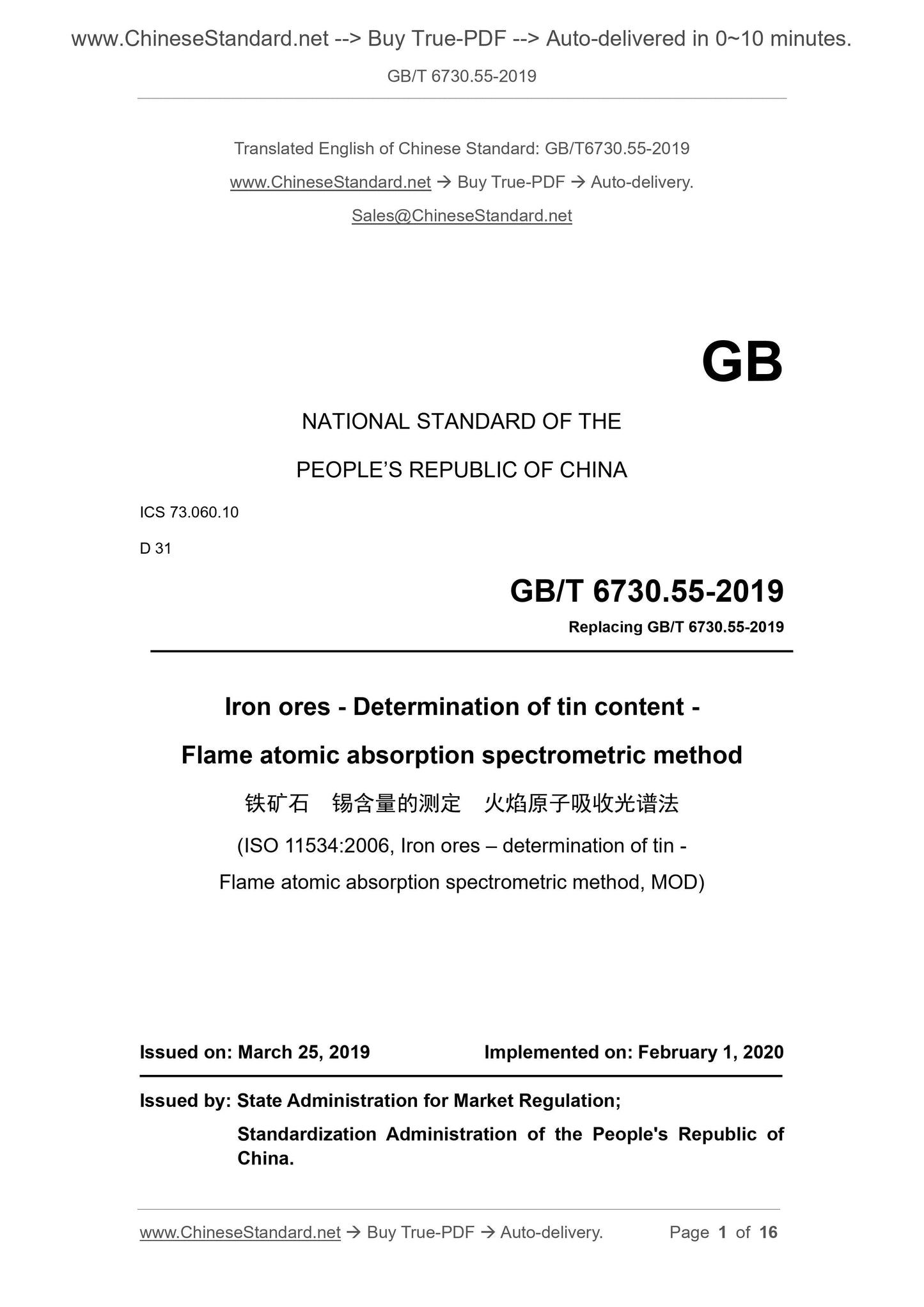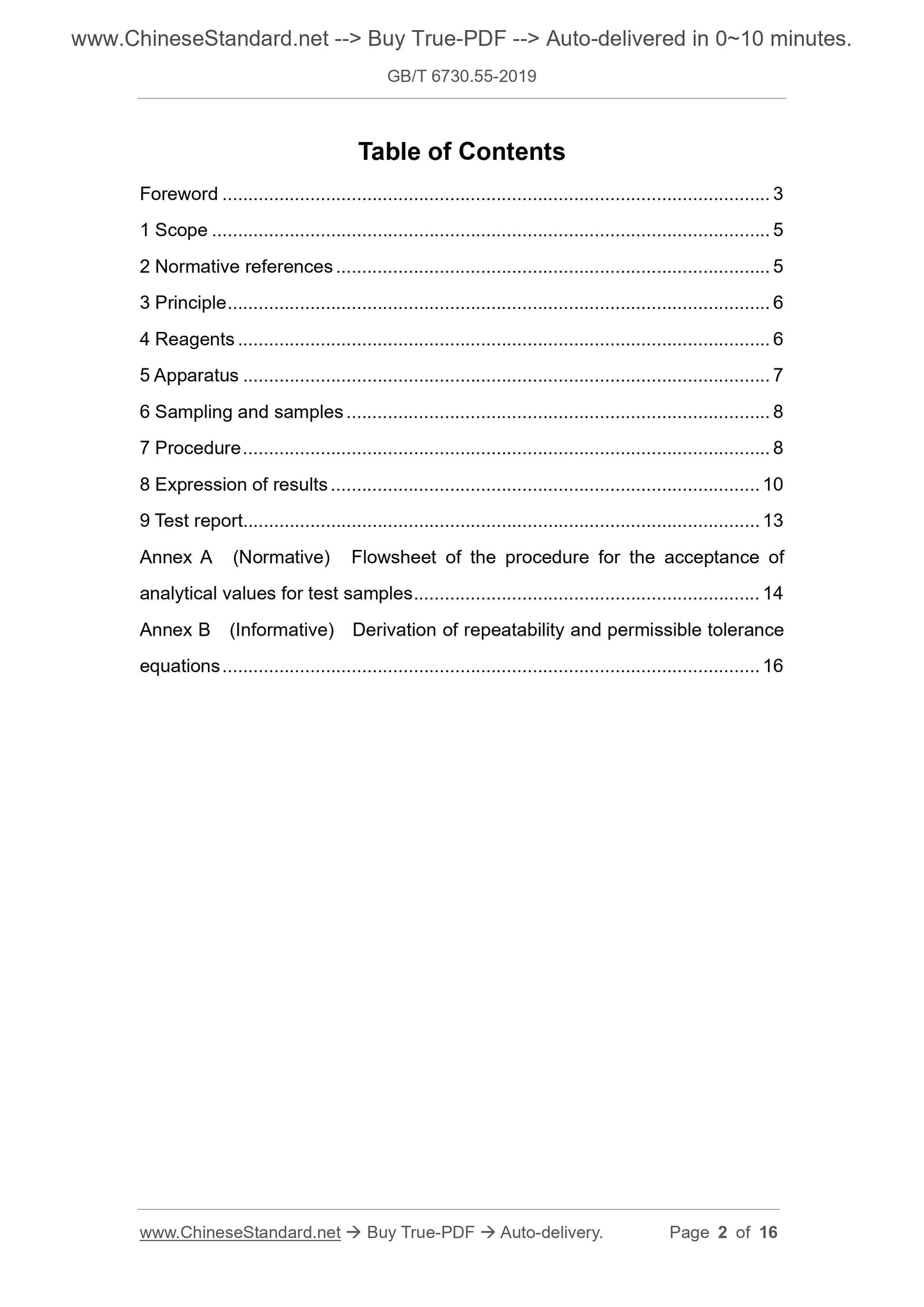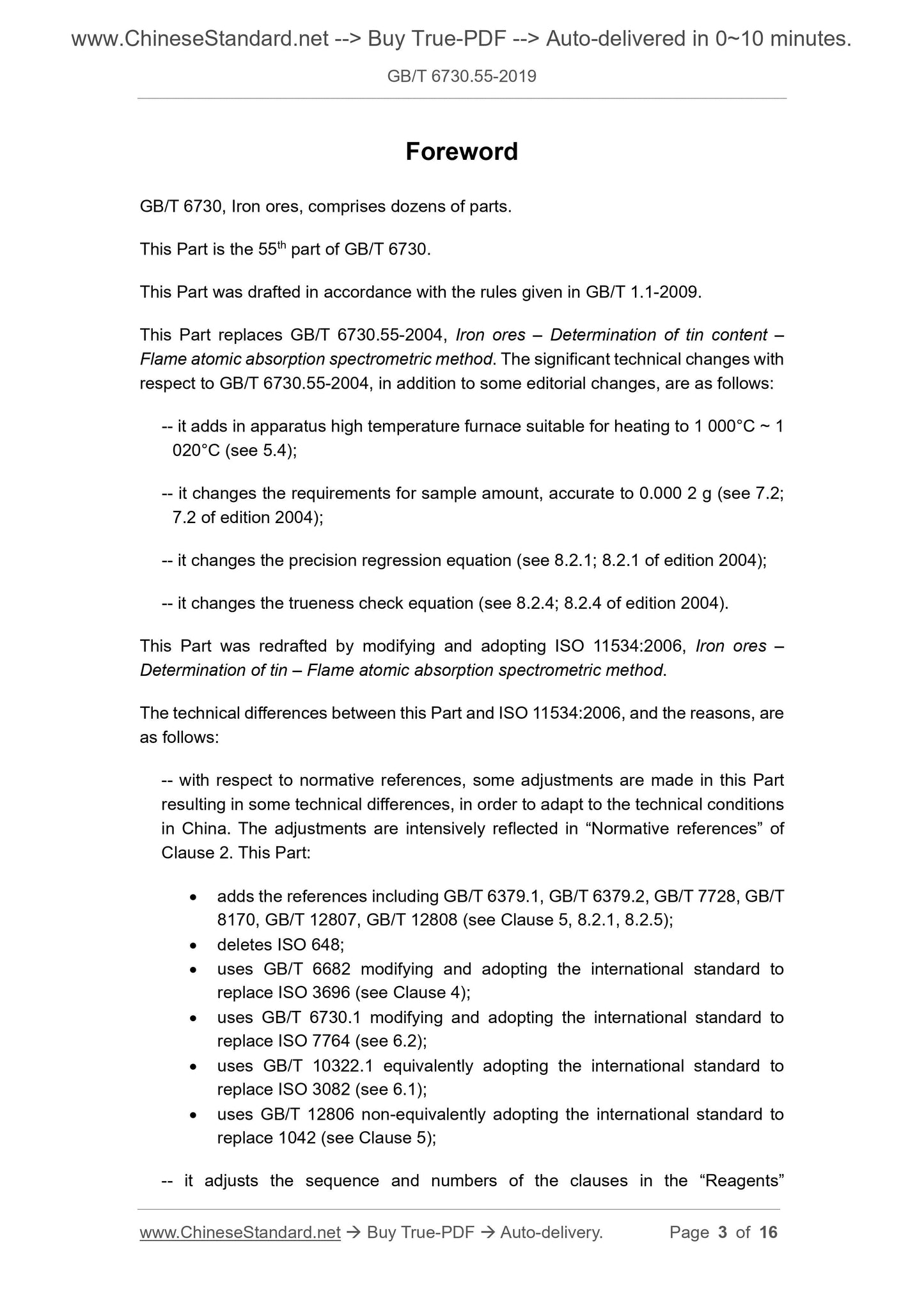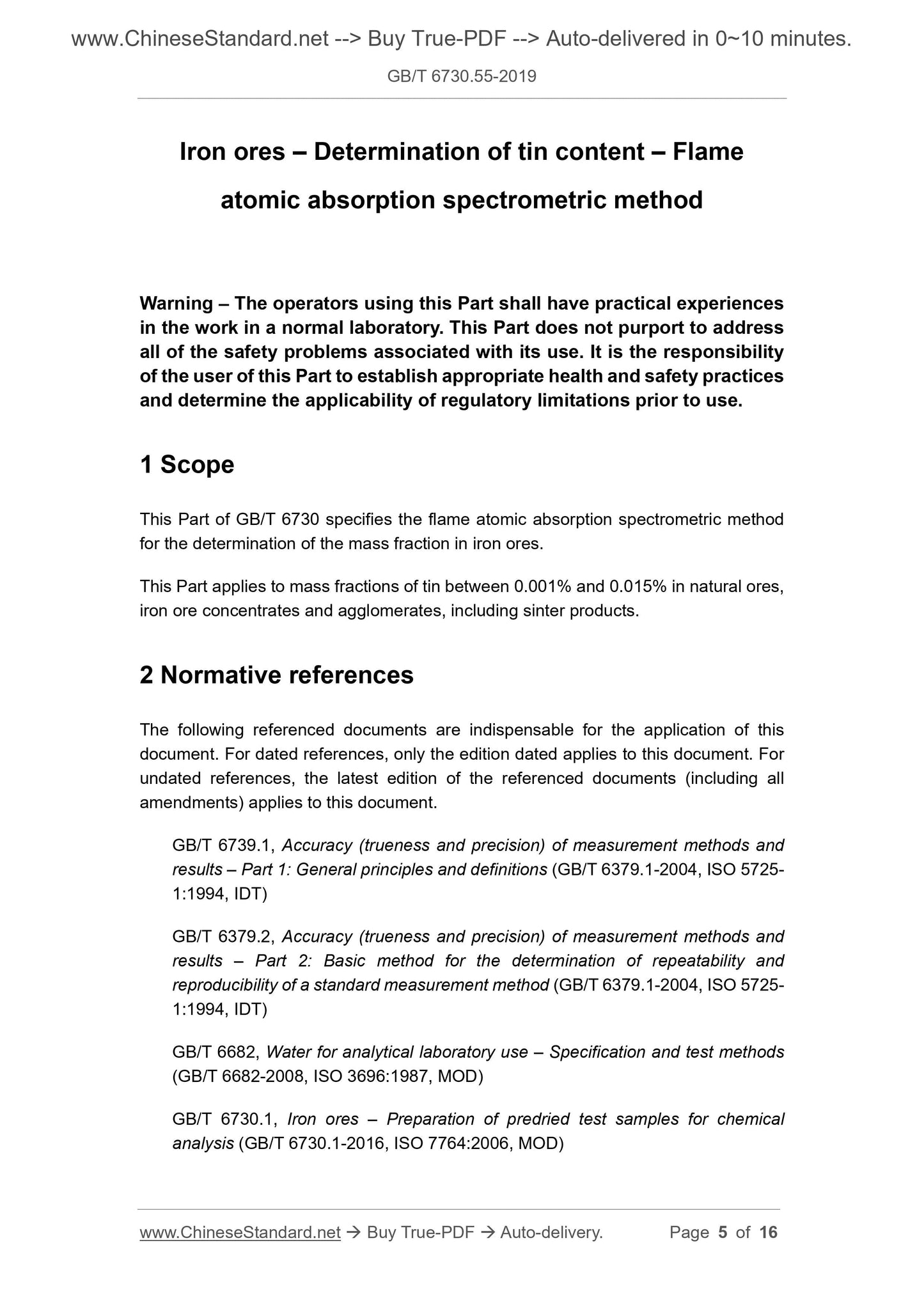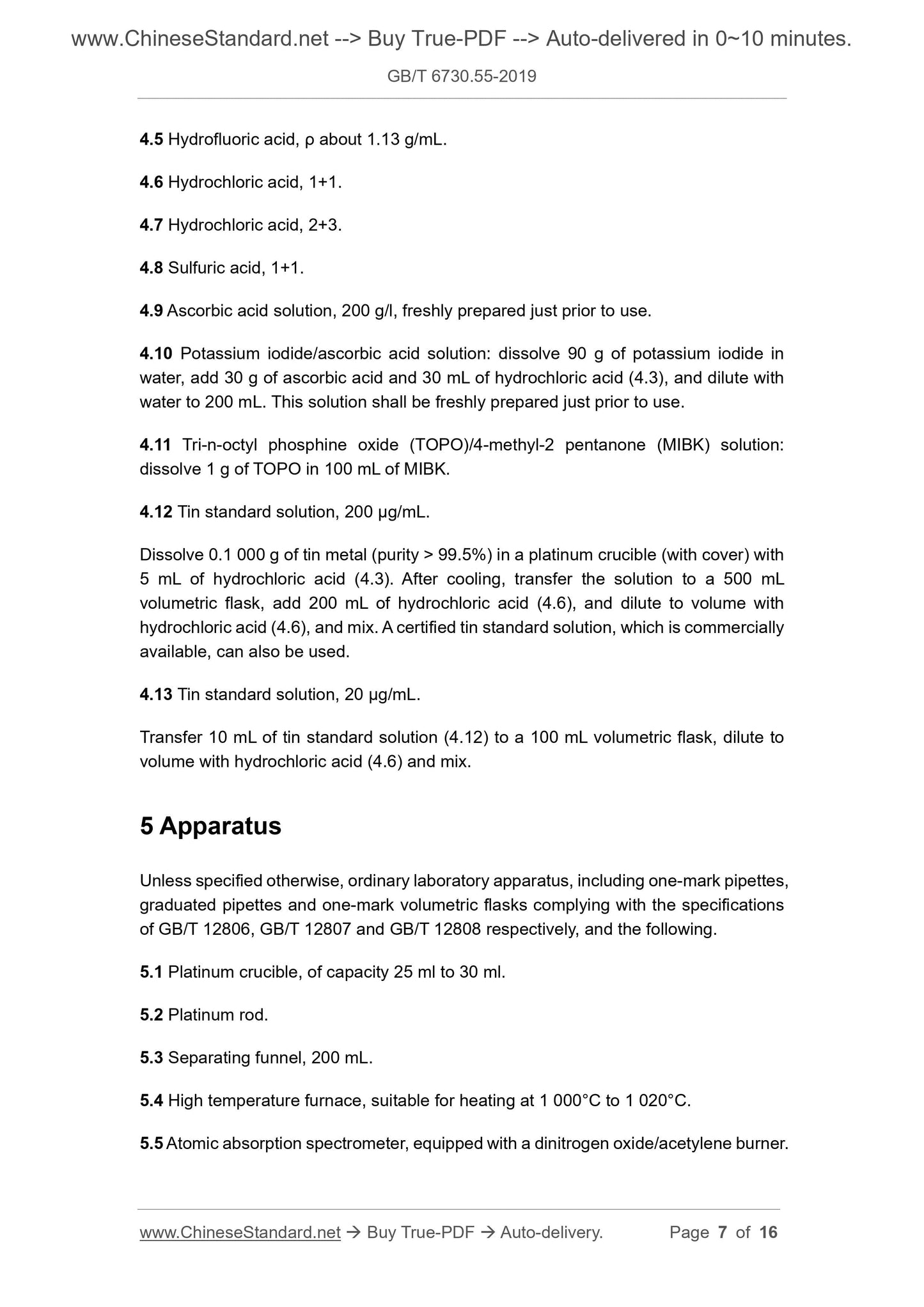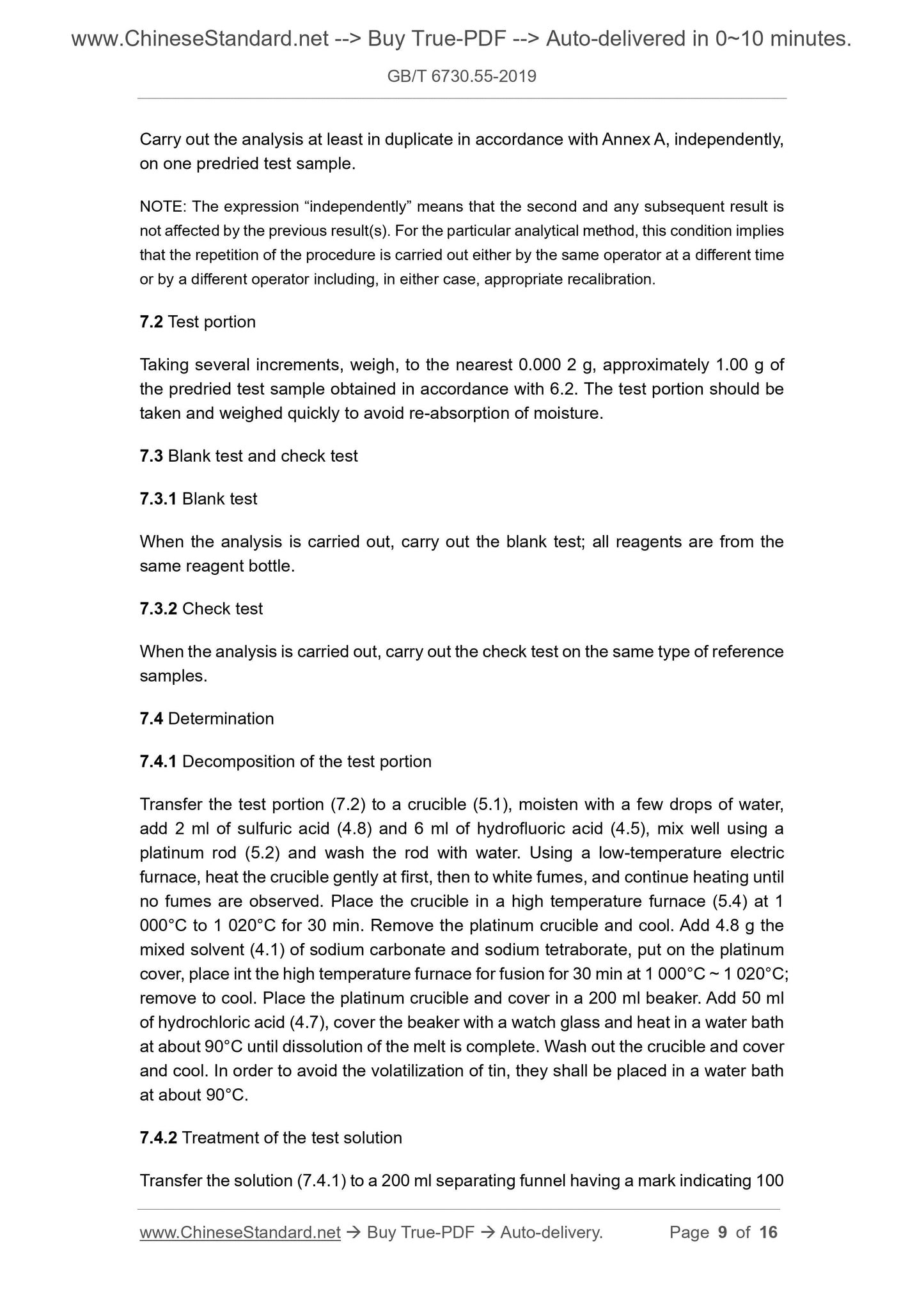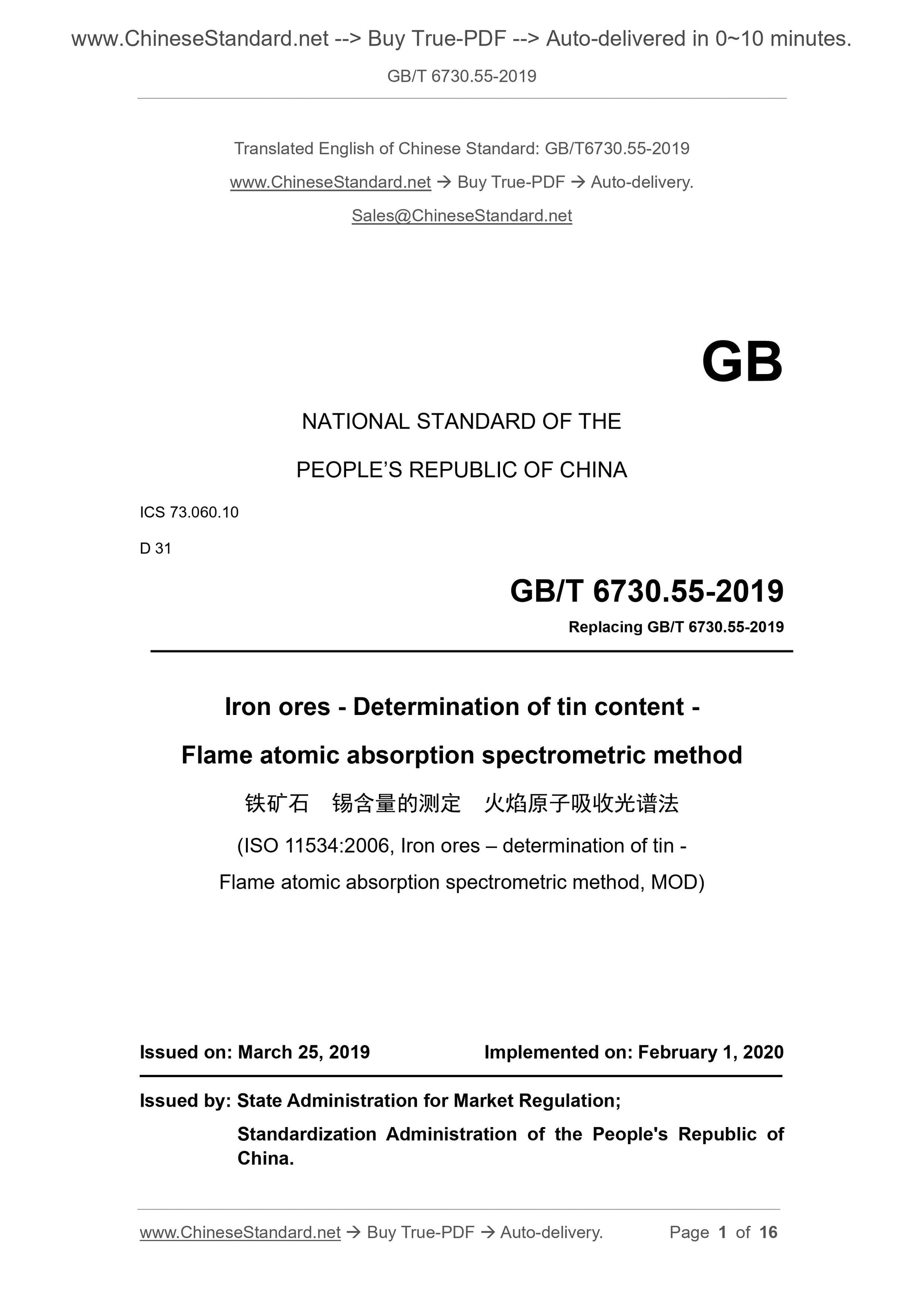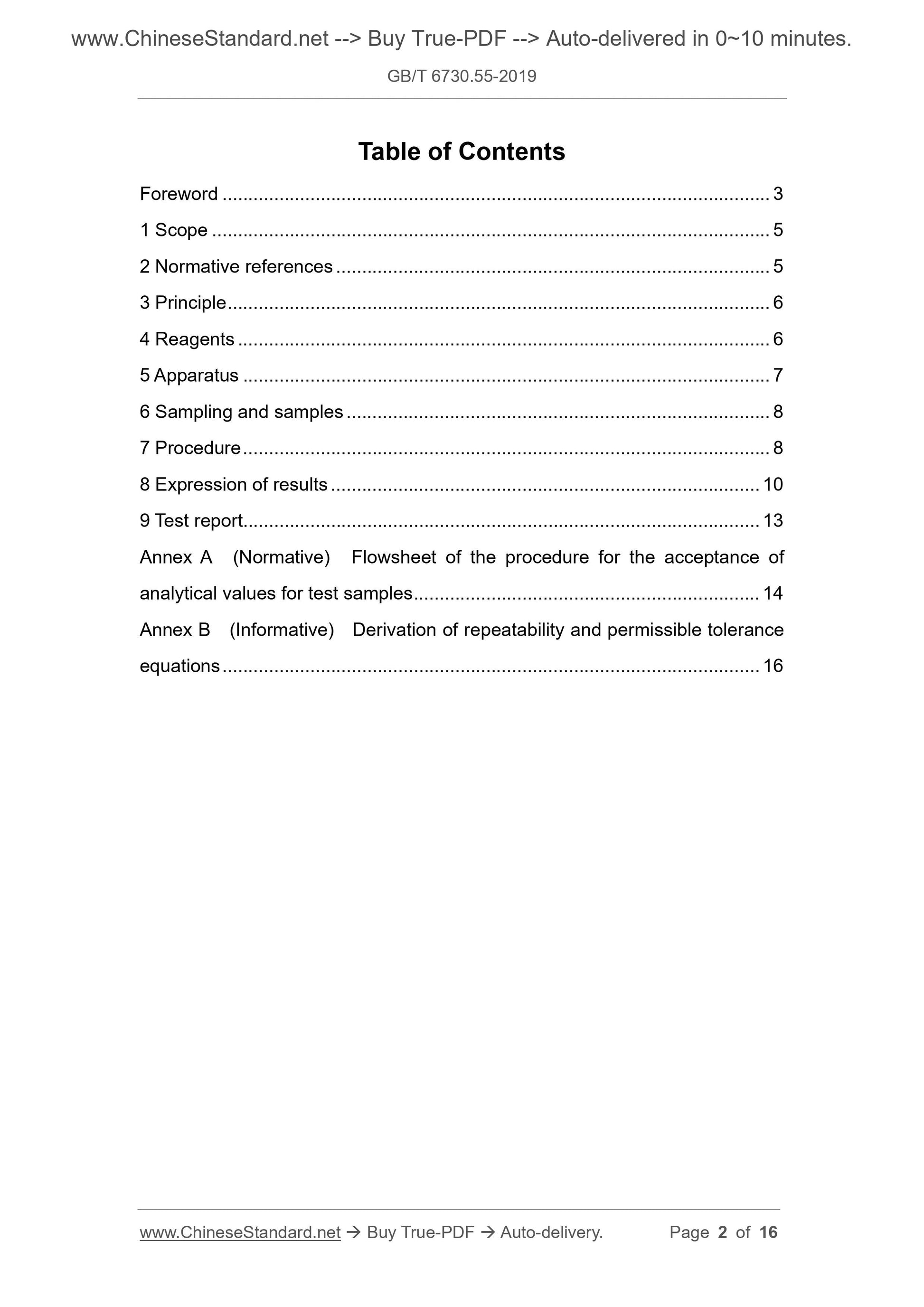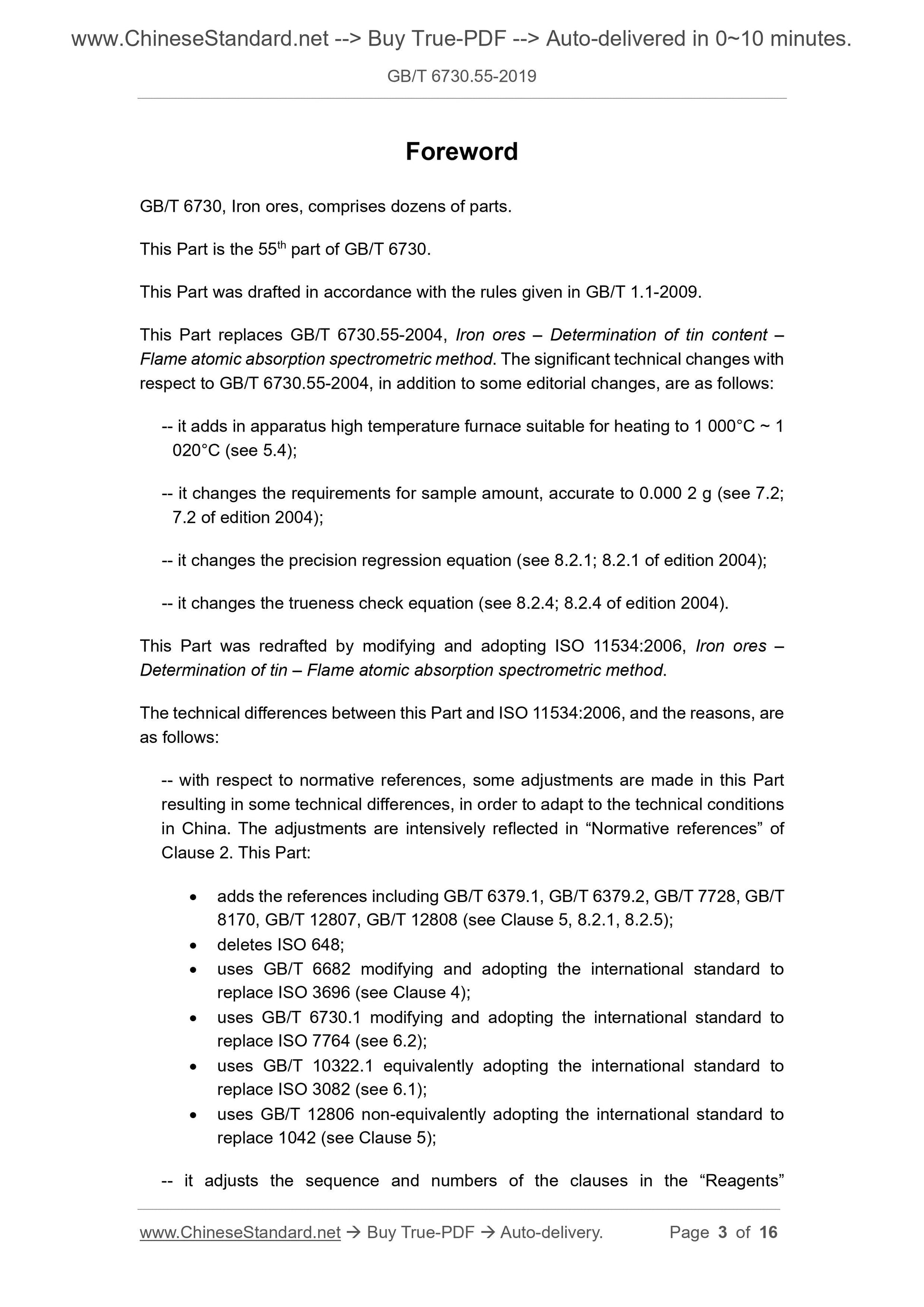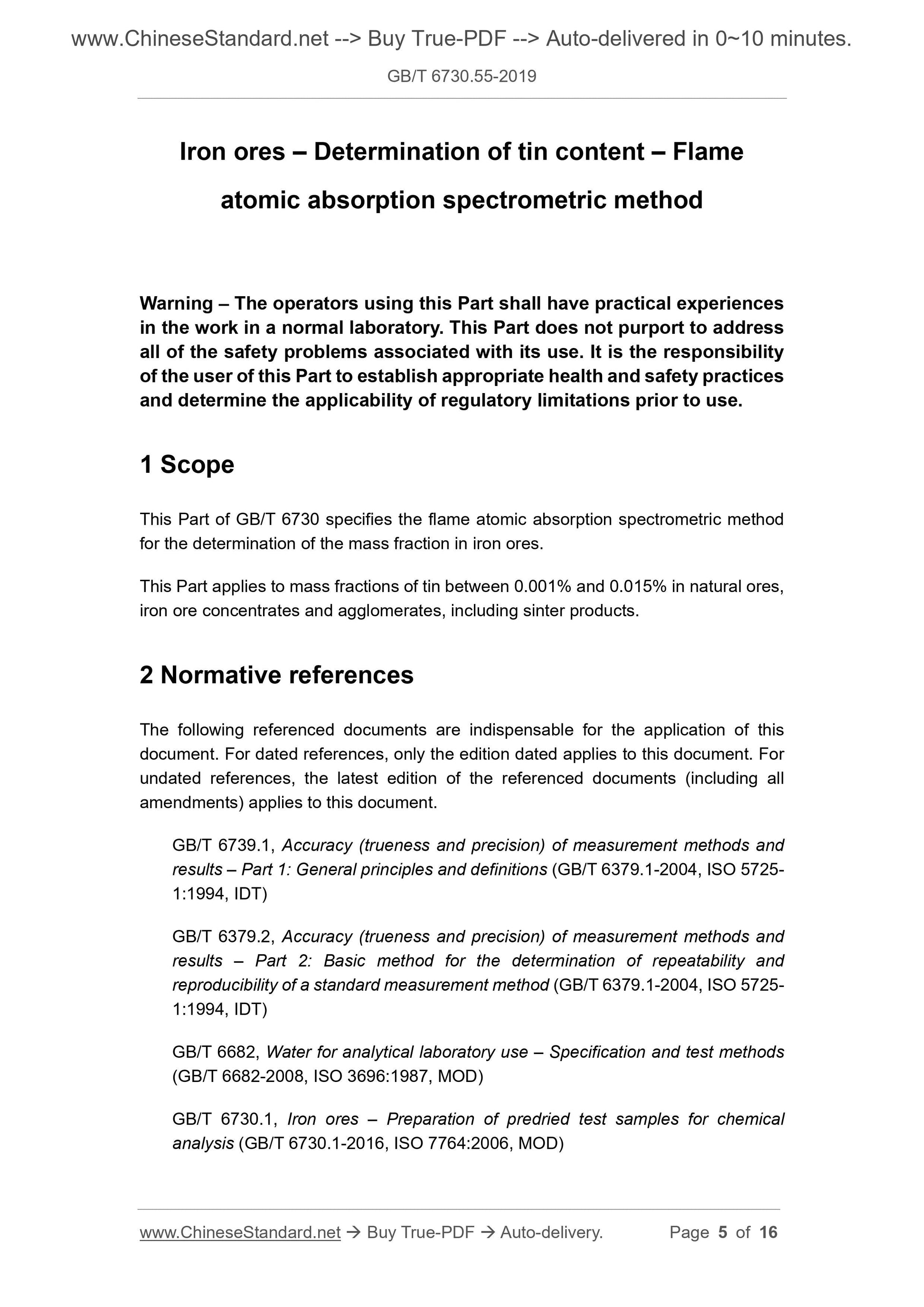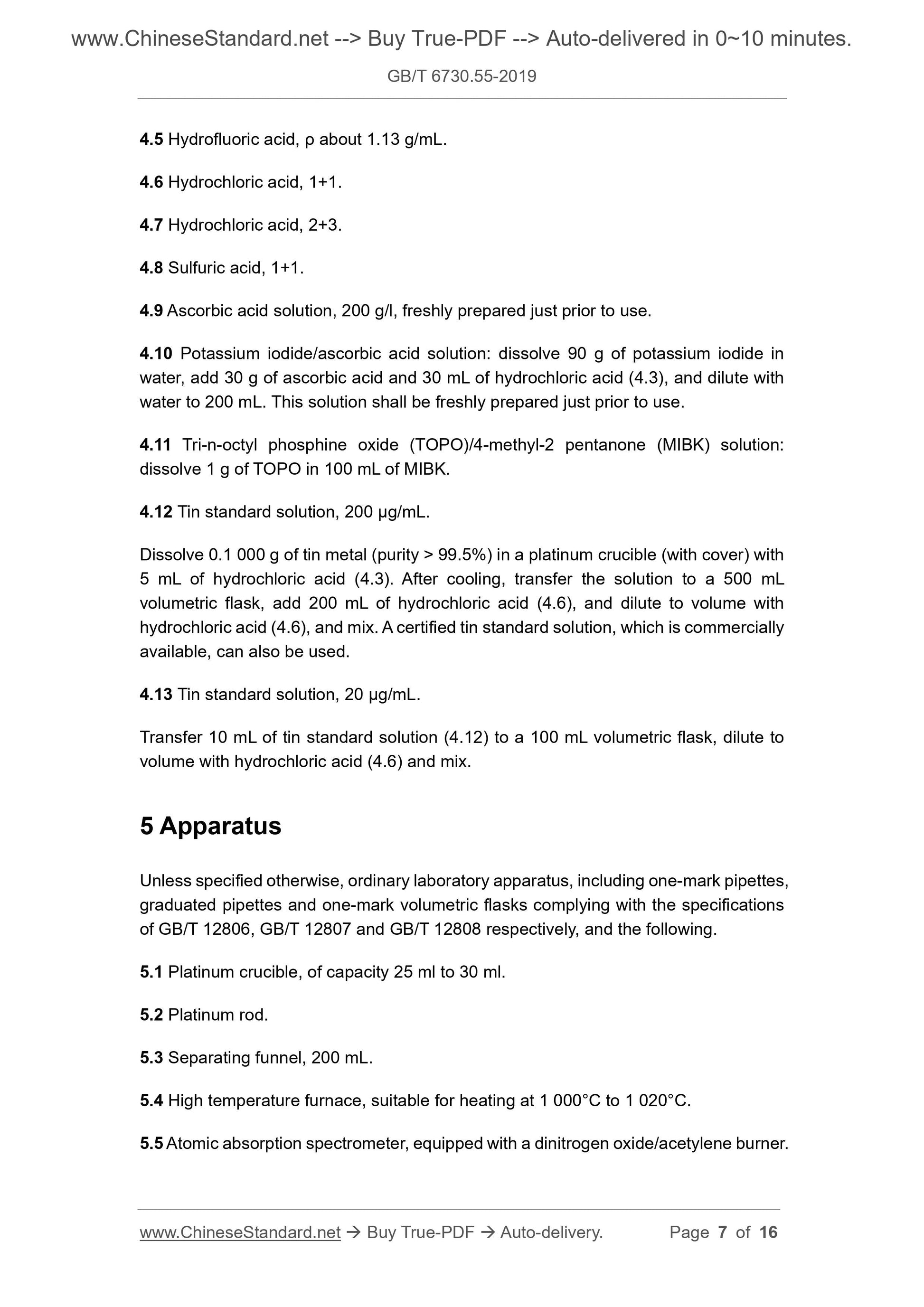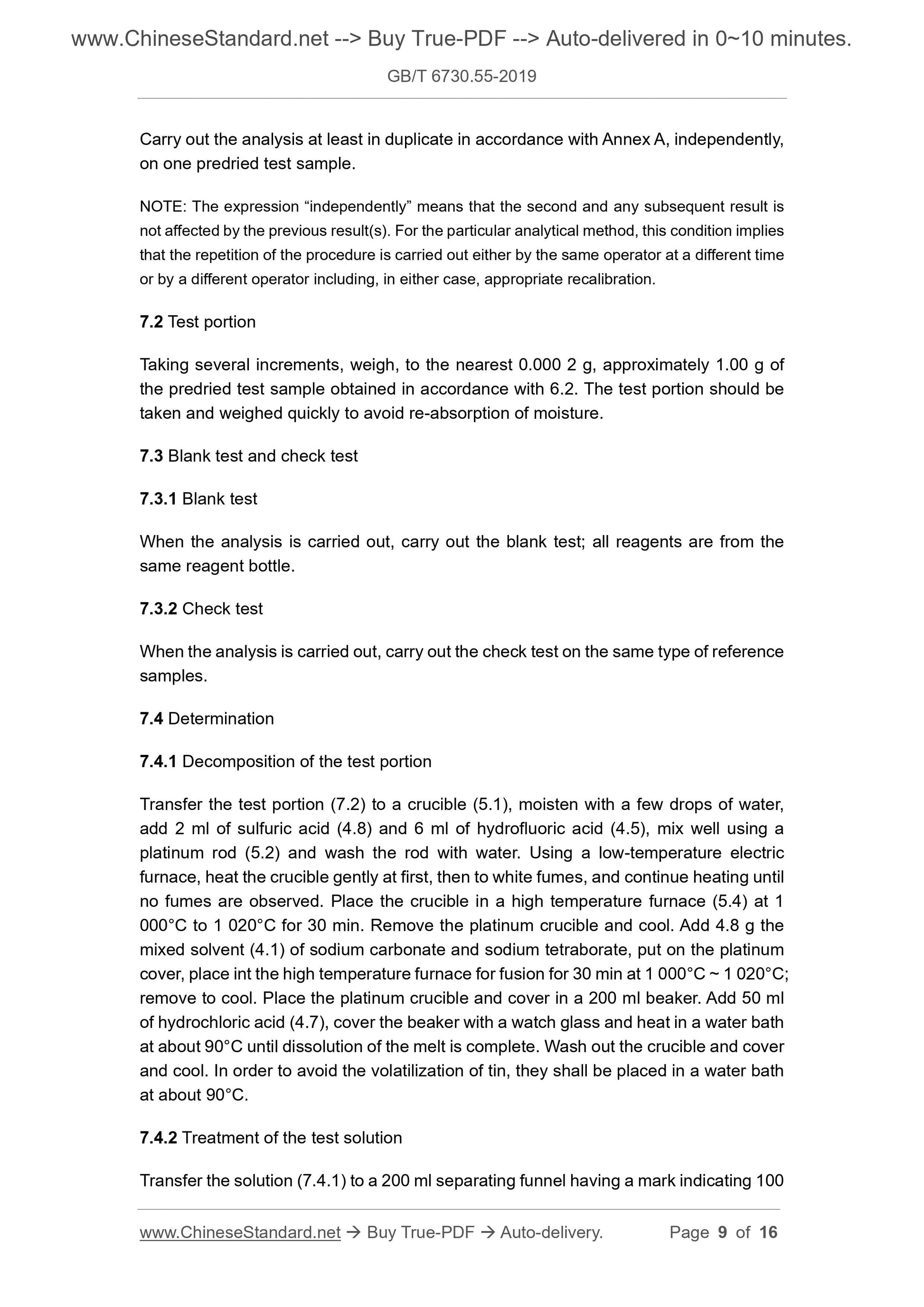1
/
of
6
www.ChineseStandard.us -- Field Test Asia Pte. Ltd.
GB/T 6730.55-2019 English PDF (GB/T6730.55-2019)
GB/T 6730.55-2019 English PDF (GB/T6730.55-2019)
Regular price
$120.00
Regular price
Sale price
$120.00
Unit price
/
per
Shipping calculated at checkout.
Couldn't load pickup availability
GB/T 6730.55-2019: Iron ores - Determination of tin content - Flame atomic absorption spectrometric method
Delivery: 9 seconds. Download (and Email) true-PDF + Invoice.Get Quotation: Click GB/T 6730.55-2019 (Self-service in 1-minute)
Newer / historical versions: GB/T 6730.55-2019
Preview True-PDF
Scope
This Part of GB/T 6730 specifies the flame atomic absorption spectrometric methodfor the determination of the mass fraction in iron ores.
This Part applies to mass fractions of tin between 0.001% and 0.015% in natural ores,
iron ore concentrates and agglomerates, including sinter products.
Basic Data
| Standard ID | GB/T 6730.55-2019 (GB/T6730.55-2019) |
| Description (Translated English) | Iron ores - Determination of tin content - Flame atomic absorption spectrometric method |
| Sector / Industry | National Standard (Recommended) |
| Classification of Chinese Standard | D31 |
| Classification of International Standard | 73.060.10 |
| Word Count Estimation | 10,140 |
| Date of Issue | 2019-03-25 |
| Date of Implementation | 2020-02-01 |
| Issuing agency(ies) | State Administration for Market Regulation, China National Standardization Administration |
Share
